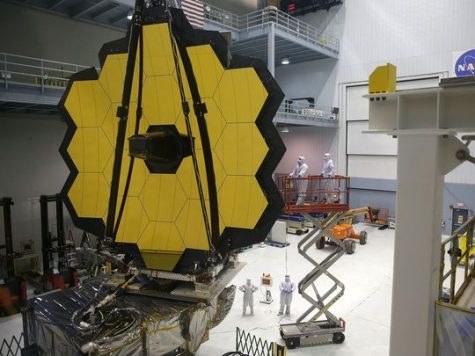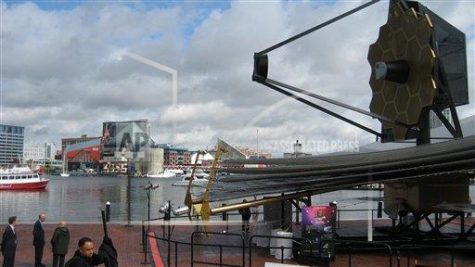James Webb Space Telescope to Launch in 2018
December 15, 2016
What if it was possible to see 13 billion years into the past?

That’s the question that will be answered by NASA’s James Webb Space Telescope, the $8.7 billion telescope that is scheduled to launch into orbit around the sun in October of 2018. Previously known as the Next Generation Space Telescope, the machine is the size of a tennis court, stands three stories tall, and will be the largest telescope ever sent into space.
The Webb, also known as JWST, is made up of 18 small mirrors attached together, which adds up to about 270 square feet. It was unveiled by NASA Administrator Charles Bolden at the Goddard Space Flight Center in Greenbelt, Maryland. Bolden says the telescope is a “milestone” in space observation.
To prepare for the journey, the telescope will undergo several rough tests to guarantee that it can survive the harsh, 390-degree-below-zero space environment, and the noise of the launch.
JWST will be 100 times more powerful than its predecessor, the Hubble Space Telescope, according to USA Today. The Hubble telescope has been operating for 25 years, and will continue to stay in space even after the Webb launches.
NASA spokesperson, Lynn Chandler, said in an interview with CNN, “Hubble rewrote the textbooks and we’re planning to rewrite the textbooks again. JWST will answer the questions which at the moment we can’t think to ask.”
NASA’s goals for the project are to “find out how galaxies evolved, observe the birth of stars and planets and investigate the potential for life on other planets.” The Webb telescope will do this by using infrared wavelengths to see the first stars and galaxies that formed 13 billion years ago, soon after the Big Bang. NASA says that to see these objects, the telescope will detect things 10 to 100 times fainter than the Hubble can currently see. Scientists also believe the telescope will be able to detect planets around nearby stars.

People in more than 17 countries have helped develop the telescope, which was built by NASA with help from the European Space Agency and the Canadian Space Agency.
James Webb, the namesake of the machine, was NASA’s second administrator.
The telescope named after Webb is expected to operate for 5-10 years, and, according to John Mather, will continue to bring fascinating images back to earth, much as its predecessor has done. Mather, a NASA astrophysicist and Nobel prize winner, said “We are opening up a whole new territory of astronomy.”


